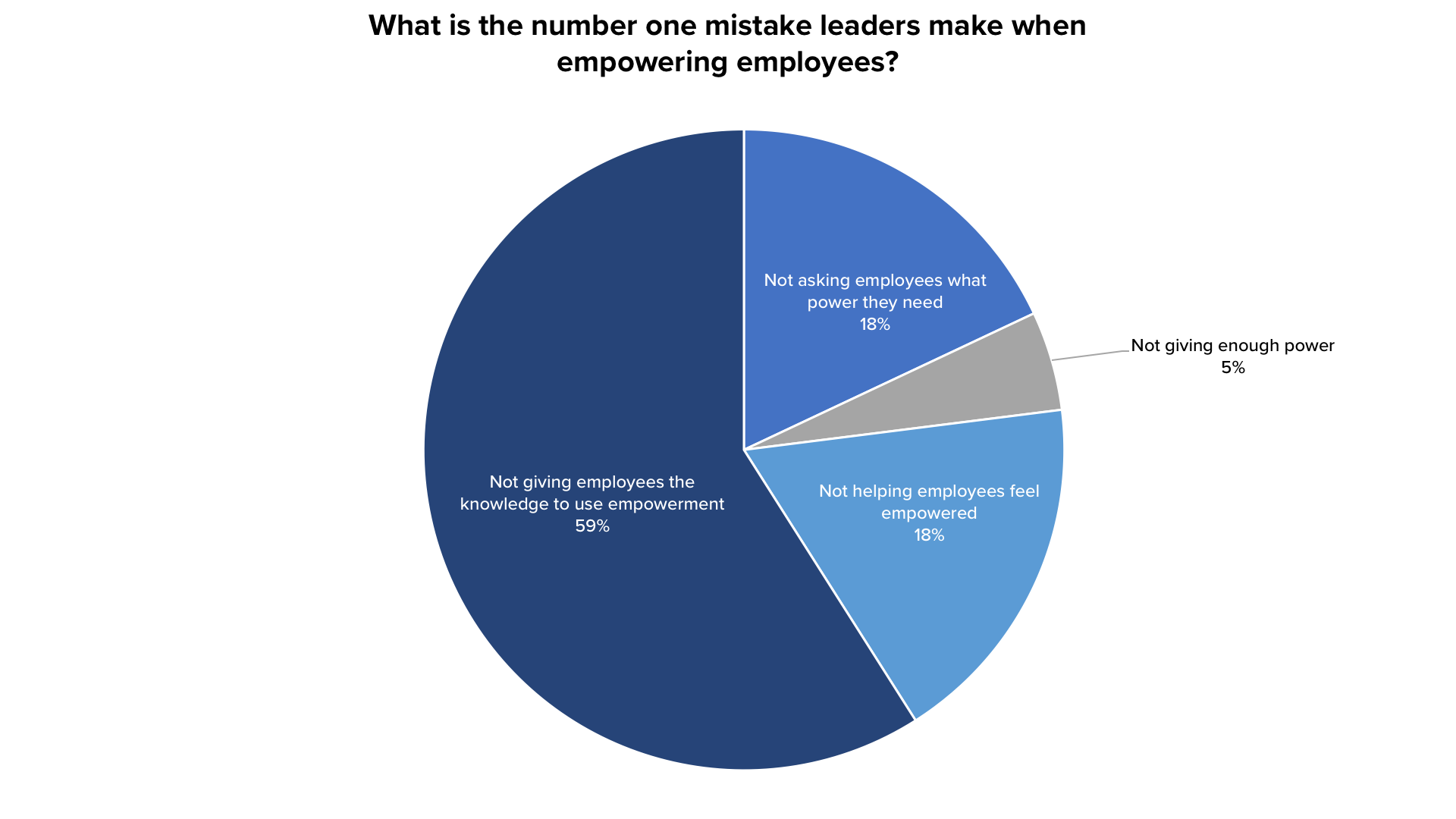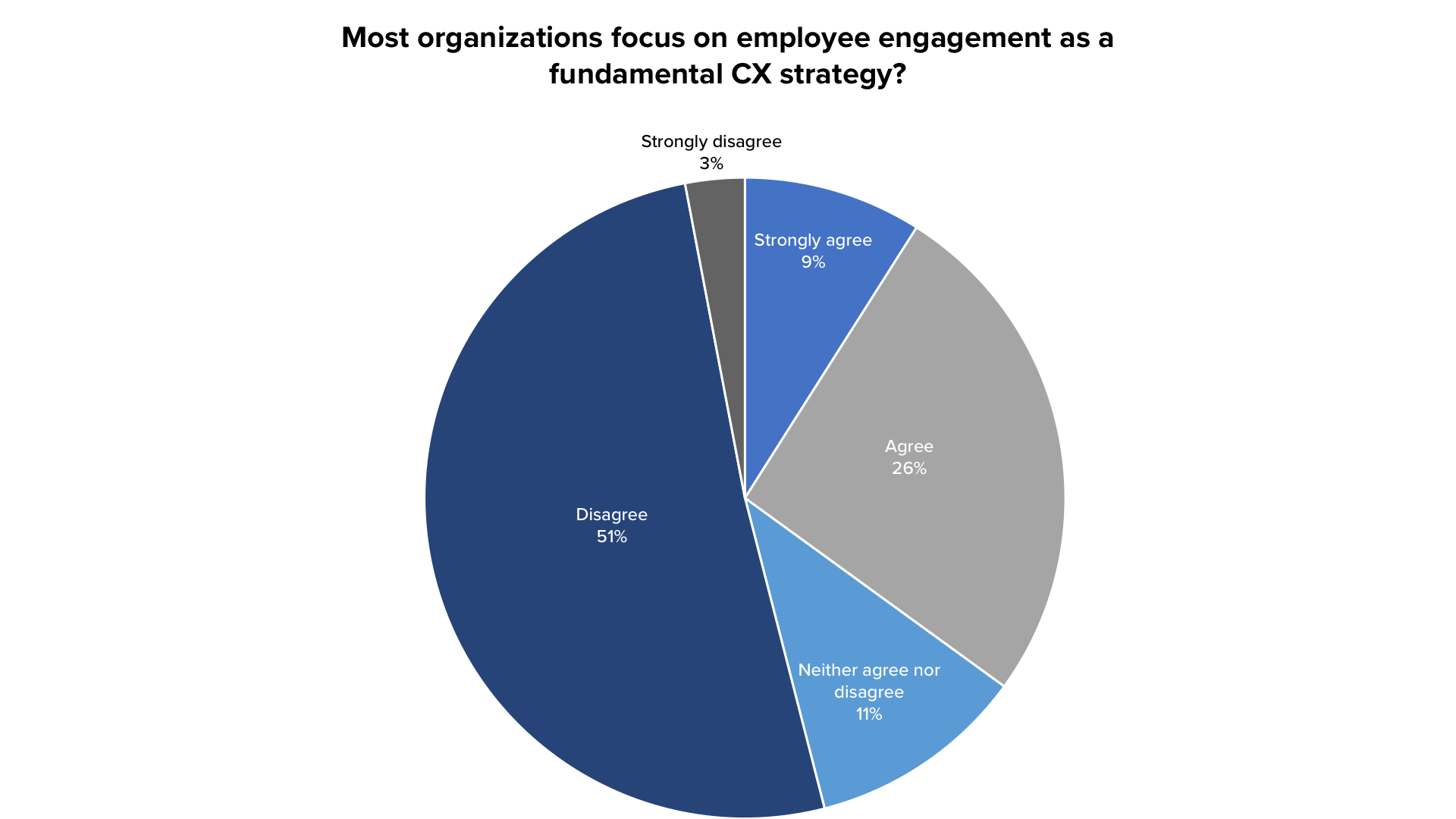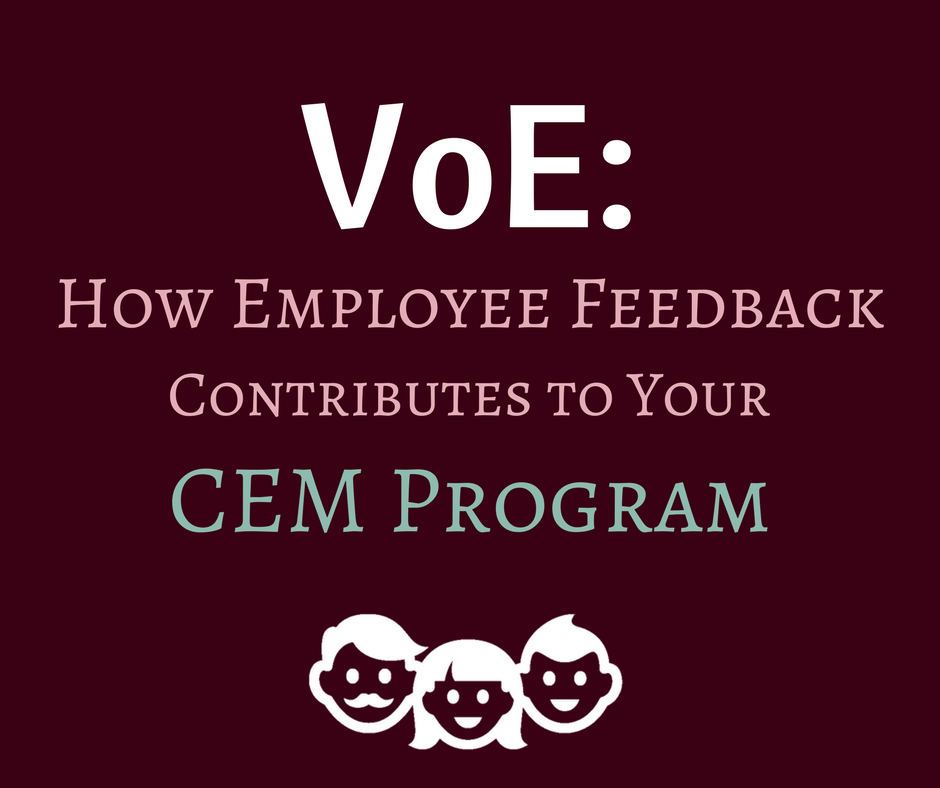Employee Engagement: The Most Important Link in Your CX Chain
In most business models today, operations teams run the-day to-day aspects of the business and ensure the delivery of efficient service that meets...

We recently hosted a webinar with CX strategist and author, Adam Toporek. The webinar covered the link between employee engagement and customer experience and how to improve execution with technology and accountability.
We also shared an overview of how one of our customers improved employee engagement and execution by measuring Net Promoter ScoreⓇ (NPS), mystery shopping, and operational audits.
Adam also discussed common mistakes made by leaders when trying to empower employees. Before we got into that, we asked the audience what they thought was the number one mistake. Here's what we found out:

We were also curious whether attendees thought that organizations focused on employee engagement as part of their overall customer experience strategy. As you can see in the chart below, only about one in four attendees believe that most organizations focus on employee engagement as a fundamental CX strategy.

After the presentation, we opened it up for a live Q&A. The response from webinar attendees was overwhelmingly positive, and Adam received many thought-provoking questions. We've summed up the top questions and Adam's responses in this blog post.
Here are three fundamental concepts that can increase employee engagement in a way that benefits customer experience:
Check out the webinar recording for some more detailed thoughts on the first two ideas.
As for helping customers feel there is “atonement,” this is a very context sensitive topic. We have a 3S Customer Service Process that we teach in our customer service training, and the first step is to Soothe the Psyche, meaning to address how the customer is feeling first. We know customer emotion is key, but too often people default to solving the problem first and not the feelings.
There are a few approaches to customer service training “on the floor” that I’ve found to be effective.
Mentoring and shadowing can both be effective for onboarding training. However, they tend to diminish in effectiveness once someone is up to speed. The distraction for the trainer and the dedication of two bodies to one workload is a high cost to pay once the benefits begin to decrease. Part-time or task-based shadowing or mentoring can be effective once someone is onboarded. This means only using these techniques for specific learnings and limited time frames.
Two of the most effective techniques we suggest to our customer service training clients are “at the desk” mini-trainings and video. Assuming that you’re tracking the challenges your team is facing at any given time, designing quick 5-10 minute trainings where you simply deliver it to a few people on the spot can be very helpful.
Video follows the same principle. While they are less personal, videos are more scalable for larger or distributed teams. Use short videos to help upskill challenges that your team is facing in real time.
As for incentivizing good customer service, I will just say this… Your incentives send a message. If you don’t incentivize customer service but incentivize other things, your team will quickly see what they believe your true priorities to be.
Any strategy or method for engaging non-customer facing personnel has to begin with connecting them to the customer and to the mission.
Here are a few ideas which may or may not be appropriate depending on your individual circumstance.
This is a pretty broad question, so I’ll just give two quick ideas that relate to our discussion of engaged, customer-focused teams.
Ask about previous customer service training. The question has three parts: what customer service training have you had in the past, what did you learn from it, and how could it have been better? You'll find after you’ve asked this question a few times; it's actually very revealing. It will tell you a lot about how the applicant thinks both about customer service and their own service skills.
Have them role play a real service scenario. Many people ask applicants “what they would do” in a service scenario. First, make sure to use a real scenario from your business. Give them the background they need, but don’t use a hypothetical. Second, shift from asking how they would handle it to asking them to role play handling it. When I was in retail, we saw a huge difference between giving a theoretical answer and actually doing it. Just remember to give them a little leeway. They're nervous, and it's an interview. Judge them less on their performance than their underlying approach.
Silos are incredibly complex to navigate and to successfully create cohesion amongst. Here are two quick tips:
Improve communication. This piece of advice seems incredibly basic, yet when consultants or advisors like me start working with organizations that have silo issues, we almost always find fundamental communication issues are at the root of the problem. Evaluate where communication breaks down and create a structure for improved communication. Just hoping it will improve is not enough.
Align objectives. One of the biggest challenges in creating a holistic customer experience is the fact that silos are often incentivized to deliver very different experiences. A classic example would be the sales team that overpromises to close sales and leaves the fulfillment department with customers that have unrealistic expectations. Making sure silos are contributing towards a seamless customer experience is the job of leadership.
Most of the core principles for serving external customers are relevant to internal customers. The challenge is generally getting team members to see their coworkers as “customers” and not “Sally from Accounting.”
The most important thing is to draw a line from their internal service behaviors to results that matter to them. Show them how responding quickly to the other department saved a huge sale. Have the internal customers share how they were helped by something the team member did. Find the positive in what they do to serve their fellow team members and emphasize it.
Do you have questions about using employee engagement to help improve customer experience at your organization? Get in touch, we'd love to chat with you!

In most business models today, operations teams run the-day to-day aspects of the business and ensure the delivery of efficient service that meets...

Guest Post by Annette Franz, CCXP

While voice of the customer (VoC) feedback is a key part of improving customer experience, it’s also important to collect feedback through other...